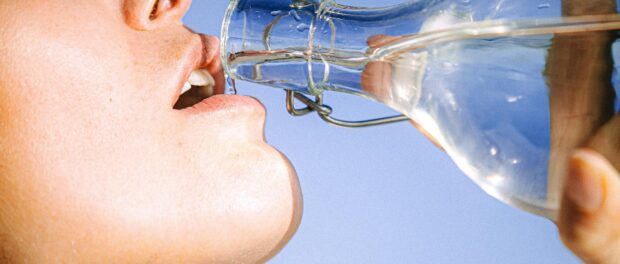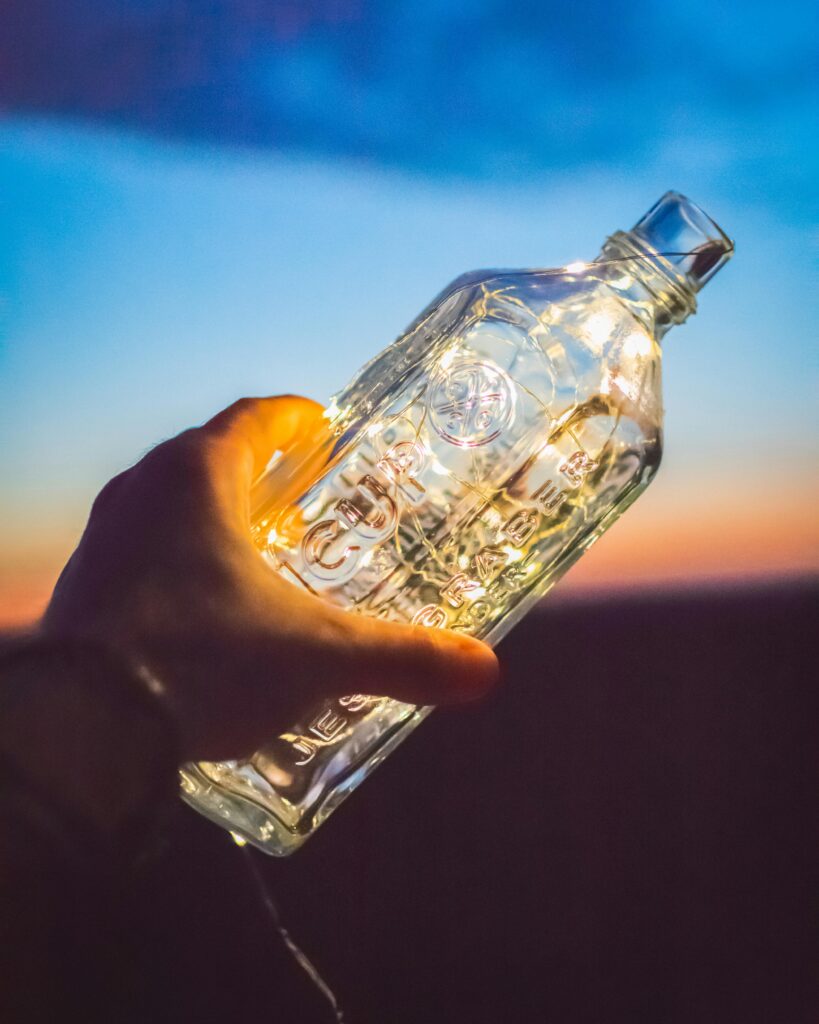Glass Bottles Now Have More Plastic in Them Than a Plastic Bottle 😧

The Ironic Twist in Your Eco-Friendly Choice
In a plot twist that would make M. Night Shyamalan drop his glass water bottle in shock, recent studies have revealed that your virtuous switch to glass containers might be filling your body with more microplastics than if you’d stuck with the villainous plastic bottle. That’s right – the glass bottle sitting smugly on your desk, the one you paid an extra $15 for because “it’s better for the environment,” might be serving you a cocktail of plastic particles with every sip.
Imagine spending your life avoiding plastic straws only to discover you’ve been essentially drinking from a liquified Lego set this whole time.
The Shocking Numbers
According to a groundbreaking study released by France’s food safety agency (ANSES) on June 21, 2025, drinks in glass bottles contain an average of 100 microplastic particles per liter – a staggering five to 50 times higher than those found in plastic bottles or metal cans.
“We expected the opposite result,” admitted PhD student Iseline Chaib, who conducted the research and presumably needed a stiff drink (not from a glass bottle) after discovering the findings.
Let’s break down these plastic-fantastic statistics:
| Container Type | Average Microplastic Particles (per liter) |
|---|---|
| Glass bottles (soft drinks) | ~100 |
| Glass bottles (beer) | ~60 |
| Glass bottles (lemonade) | ~40 |
| Glass bottles (soft drinks) | ~30 |
| Plastic bottles | 2-20 |
| Metal cans | 2-20 |
| Glass bottles (water) | 4.5 |
| Plastic bottles (water) | 1.6 |
The Culprit: Bottle Caps and Their Sneaky Paint
In a detective twist worthy of a CSI: Beverage Containers episode, researchers identified the primary suspect: the paint on bottle caps. These seemingly innocent seals are shedding plastic particles onto the rim of your bottle faster than a Golden Retriever sheds on a black couch.
The paint on the caps shows “tiny scratches, invisible to the naked eye, probably due to friction between the caps when they were stored,” according to ANSES. These microscopic scratches release plastic particles that then find their way into your drink, essentially turning your “pure spring water” into “spring water with a side of cap paint.” Researchers estimate that the average adult who regularly drinks from glass bottles may consume approximately 5,800 microplastic particles annually just from this source. That’s roughly equivalent to eating a credit card’s worth of plastic every decade – a payment plan no one signed up for.
Wine Drinkers: You’re (Somewhat) Safe
In what can only be described as “the universe throwing a bone to sommeliers,” wine contained relatively few microplastics despite being stored in glass bottles with caps. Guillaume Duflos, research director at ANSES, noted that the reason for this discrepancy “remains to be explained,” though wine enthusiasts have already begun claiming it’s because “wine is superior in every way, even in its resistance to microplastic contamination.”
Wine: The only drink sophisticated enough to tell microplastics, “Not today, darling.”

The Global Plastic Predicament
This discovery adds to the growing body of evidence that microplastics have become ubiquitous in our environment. A 2023 study published in the Journal of Environmental Science and Technology found microplastics in 83% of tap water samples collected worldwide, while a 2024 report from the World Health Organization (WHO) detected microplastics in human placentas, blood, and lung tissue.
Scientists estimate that the average person now ingests approximately 5 grams of plastic every week – roughly the weight of a credit card. By 2050, some projections suggest there will be more plastic in the ocean than fish by weight if current trends continue. At this rate, future archaeologists won’t be digging up fossils; they’ll be excavating perfectly preserved PET bottles and wondering why humans decided to pickle themselves in their own polymers.
Is There Any Hope?
Before you resign yourself to a lifetime of plastic consumption, ANSES did offer one ray of hope. The agency tested a cleaning method involving blowing the caps with air, then rinsing them with water and alcohol, which reduced contamination by 60 percent.
Of course, this raises the practical question: will consumers start treating their bottle caps like surgical instruments, meticulously sterilizing them before each use? And if you’re already going through that much trouble, wouldn’t it be easier to just drink straight from the tap or invest in a filtration system?
The Solution Is Blowing in the Wind (Literally)
Drink manufacturers could easily implement the air-blowing and rinsing method in their production processes. In fact, a 2025 industry report by BevTech Analytics estimates that implementing such measures would cost manufacturers less than $0.01 per bottle – a small price to pay for reducing your customers’ involuntary plastic consumption.
Several leading beverage companies have already announced plans to modify their bottling processes. EcoSip, a boutique water brand, has begun marketing “Microplastic-Free Glass™” bottles, a claim that industry watchdogs have called “technically true but spiritually misleading.”
What Should Consumers Do?
So what’s a health-conscious, environmentally-aware consumer to do? Here are some expert recommendations:
- Consider metal containers like stainless steel, which have shown lower microplastic counts in multiple studies
- If using glass bottles, inspect caps for visible paint flaking and clean them before drinking
- Water filtration systems can reduce (though not eliminate) microplastic exposure
- Limit consumption of soft drinks and beer in glass bottles, which showed the highest contamination levels
- When purchasing wine, feel free to splurge on the good stuff – it’s practically a health investment now
The Final Irony
Perhaps the most ironic aspect of this whole situation is that many consumers switched to glass specifically to avoid plastic exposure. A 2024 consumer survey by GreenChoice found that 78% of respondents who preferred glass containers cited “avoiding chemicals from plastic” as their primary motivation.
Those same consumers might now find themselves in the awkward position of having to admit that their plastic-avoiding friends who stuck with metal containers were right all along – a conversation that will surely go down smoothly over drinks (served in ceramic mugs, presumably).
At this point, the only truly safe beverage container might be your cupped hands – assuming you haven’t recently applied nail polish.
Conclusion: A Transparent Problem
While scientists continue to research the potential health impacts of microplastic consumption, one thing is clear: our efforts to avoid plastic exposure are becoming increasingly complicated. The discovery that glass bottles – long considered an eco-friendly alternative – actually contain more microplastics than plastic bottles is a humbling reminder that environmental solutions are rarely as transparent as, well, glass.
In the meantime, perhaps we can all take comfort in the fact that humans have been inadvertently consuming foreign substances throughout history. After all, Victorian-era carbonated beverages occasionally contained trace amounts of lead, and yet humanity persevered. With that cheerful thought in mind, bottoms up! Just maybe not from a glass bottle.
Note: This article is based on scientific research published by ANSES in June 2025. While the statistics and core findings are factual, the health implications of microplastic consumption remain an area of ongoing research.




Leave a comment